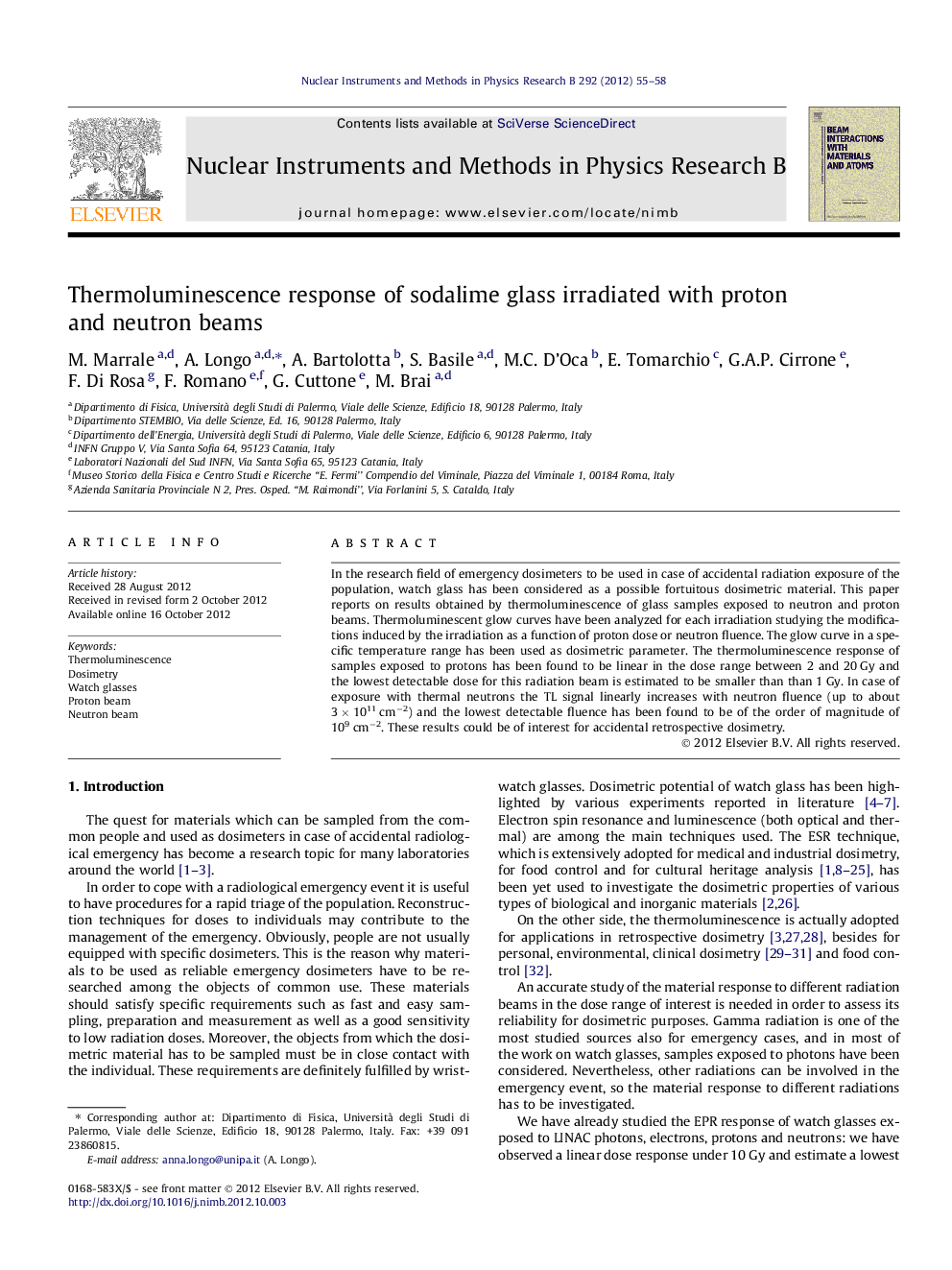| Article ID | Journal | Published Year | Pages | File Type |
|---|---|---|---|---|
| 1680554 | Nuclear Instruments and Methods in Physics Research Section B: Beam Interactions with Materials and Atoms | 2012 | 4 Pages |
In the research field of emergency dosimeters to be used in case of accidental radiation exposure of the population, watch glass has been considered as a possible fortuitous dosimetric material. This paper reports on results obtained by thermoluminescence of glass samples exposed to neutron and proton beams. Thermoluminescent glow curves have been analyzed for each irradiation studying the modifications induced by the irradiation as a function of proton dose or neutron fluence. The glow curve in a specific temperature range has been used as dosimetric parameter. The thermoluminescence response of samples exposed to protons has been found to be linear in the dose range between 2 and 20 Gy and the lowest detectable dose for this radiation beam is estimated to be smaller than than 1 Gy. In case of exposure with thermal neutrons the TL signal linearly increases with neutron fluence (up to about 3 × 1011 cm−2) and the lowest detectable fluence has been found to be of the order of magnitude of 109 cm−2. These results could be of interest for accidental retrospective dosimetry.
